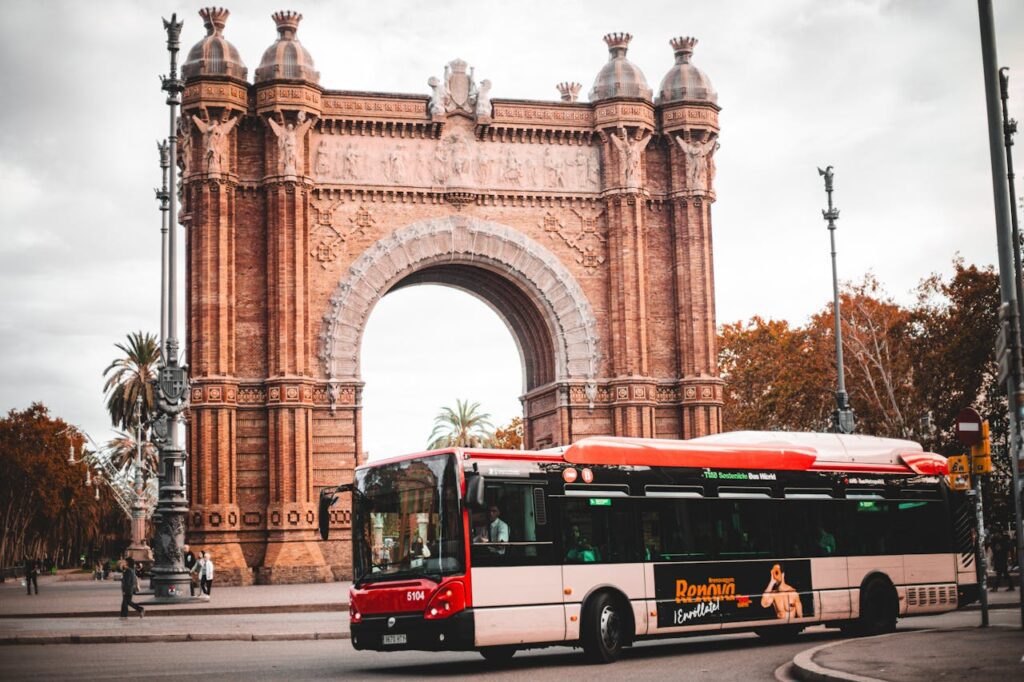Exploring Barcelona is like stepping into a vibrant tapestry of culture, history, and stunning architecture. With so much to see and do, figuring out how to get around efficiently is key to making the most of your visit. Luckily, Barcelona’s public transportation system is both comprehensive and tourist-friendly, making it a breeze to hop from one iconic landmark to another.
From the bustling streets of Las Ramblas to the architectural marvels of Gaudí, you’ll find that the metro, buses, and trams can take you just about anywhere. Whether you’re a first-time visitor or a seasoned traveler, mastering the ins and outs of Barcelona’s transit options will enhance your sightseeing experience. Join me as I guide you through the essentials of navigating this dynamic city with ease in 2024.
Understanding Barcelona’s Public Transportation System
Barcelona’s public transportation offers a convenient and cost-effective way to explore the city. With various options available, traveling to key attractions is straightforward.
Overview of Transportation Options
Barcelona’s system includes the metro, buses, and trams, each covering different routes and destinations. The metro, with over 150 stations, is a fast way to reach popular sights like La Sagrada Familia and Park Güell. Buses connect areas not accessible by metro, providing scenic views during travel. Trams serve specific zones, complementing the network’s coverage.
Ticketing and Payment Methods
Purchasing tickets is simple, with options to suit different travel plans. Single-ride tickets are available, but T-casual cards offer 10 rides and save money for frequent use. Consider Hola Barcelona Travel Cards for unlimited daily travel. Tickets can be bought at machines, online, or via the TMB app, accepting credit cards and mobile payments.
Planning Your Sightseeing Journey
Barcelona’s public transportation simplifies sightseeing, offering easy transit to major attractions. Strategizing your journey improves efficiency and enhances the experience.
Key Attractions Accessible by Metro
Barcelona’s metro connects many of the city’s iconic spots. La Sagrada Familia is on the L2 and L5 lines, while Park Güell requires a walk from Vallcarca or Lesseps stations on L3. Casa Batlló is near Passeig de Gràcia on L2, L3, and L4. I often use the metro to reach Camp Nou via the L5 line. With over 150 stations, the metro reduces travel time significantly.
Using Buses and Trams for Different Routes
Buses and trams cover places the metro doesn’t reach. Number 24 bus takes me directly to Park Güell’s entrance, bypassing the uphill walk. I suggest taking the number V15 to see the waterfront or reach Barceloneta Beach. Trams like T4 serve the Forum area, ideal for visiting the Blau Museum. Combining different modes maximizes route flexibility and scenery opportunities while exploring Barcelona.
Tips for a Smooth Travel Experience
Navigating Barcelona’s public transportation is key to a hassle-free sightseeing adventure. Strategic planning and some basic guidelines enhance your journey.
Best Times to Travel
Peak hours, typically from 7-9 AM and 6-8 PM on weekdays, fill trains and buses with commuters. I find mid-mornings and early afternoons on weekdays offer a more relaxed experience with less crowd. Weekends, especially Saturday mornings, are also less busy, providing a calm atmosphere for exploring attractions.
Safety and Etiquette Guidelines
Staying alert in busy stations and trains protects against pickpocketing. I keep my belongings close, especially in crowded areas. When aboard, offering seats to elderly or pregnant travelers and allowing passengers to exit before boarding are considered polite. These gestures not only enhance the ride for everyone but also showcase respect for local customs.
Exploring Beyond the City Center
Bar th. Barcelona’s public transportation is essential for sightseeing and offers excellent opportunities to explore areas beyond the bustling city center. Efficient transit modes like the train and buses expand your itinerary to nearby attractions.
Day Trips Using Public Transportation
Barcelona’s train system connects you to charming nearby towns and scenic nature spots. A train ride to Montserrat, a stunning mountain and monastery, blends history with breathtaking landscapes. For a seaside escape, trains run to Sitges, inviting you to enjoy its beautiful beaches and vibrant culture. Buses to the historic city of Girona reveal medieval architecture and a rich cultural heritage.
Hidden Gems Off the Beaten Path
Beyond well-trodden routes, Barcelona’s transport network uncovers lesser-known marvels. The L12 tram line leads to the quirky Parc del Laberint d’Horta, where maze-like paths await explorers. Buses to Poblenou unveil a modern, artistic neighborhood bustling with eclectic eateries and indie boutiques. Further afield, the Collserola Tower, accessible by funicular, provides panoramic views of the city and serene hiking trails.
Conclusion
Exploring Barcelona’s rich tapestry of culture and history is a breeze with its efficient public transportation system. By tapping into the metro, buses, and trams, you can seamlessly connect with the city’s iconic landmarks and hidden gems. Whether you’re a first-time visitor or a seasoned traveler, planning your journey and mixing different modes of transport will elevate your sightseeing adventure.
With easy ticketing options and strategic travel tips, you’ll navigate Barcelona like a local and make the most of your time. So hop on board and let the city’s vibrant energy and stunning sights unfold before you. Happy travels!


